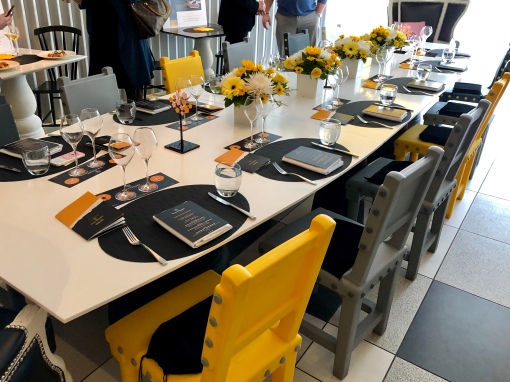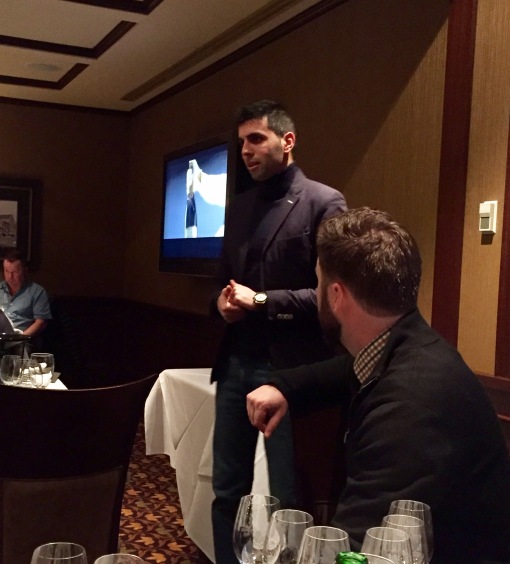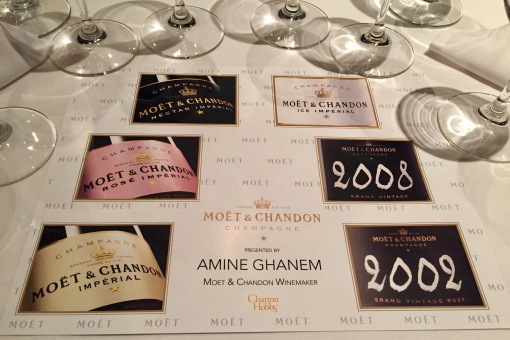By Tyler Derksen

Drew Mayville of Buffalo Trace.
It’s not every Wednesday that I get to leave work in the middle of the day to try nine whiskeys (if you’re being pedantic, actually eight whiskeys and one whisky, as the spelling of the spirit varies with its location of production), but this past Wednesday was one of those days. I had the absolute pleasure to attend a tasting of Sazerac offerings chaired by Buffalo Trace’s Master Blender, Drew Mayville. Buffalo Trace is part of the larger Sazerac company, whose myriad of other brands we also got to enjoy. While the whiskey was the star of the show, it was Drew’s presentation and engagement with the subject matter and with all of us that really made the tasting special. Drew is a Canadian who began his career in spirits at the Seagram’s plant in Waterloo, Ont. in 1980, eventually becoming the company’s fourth ever Master Blender. After Seagram ceased to be, Drew then took his talents to Buffalo Trace, which at the time he joined was a relative unknown in the whiskey world, a fact that is hard to believe now that it has earned over 500 awards nationally and internationally over the last decade.
Drew’s passion for whiskey was readily apparent. As Buffalo Trace’s current Master Blender, it is his job to take the aged spirits created by the Master Distiller and weave them into both established product lines and new and exciting projects. Drew’s favourite whiskey is “the one he hasn’t made yet”. In answer to the follow-up question “how do you make a better whiskey?”, Drew immediately said, “I don’t know”, reflecting his continuous stretch for further improvement. Perhaps my biggest takeaway was Drew’s love of experimentation, embraced by both Buffalo Trace and Sazerac, which has created at least 50 different bottling “experiments” since 2006. He freely acknowledges that not all of the experiments are successful and lead to new product lines, but this adventurous spirit is part of the fabric of Sazerac. This is all the more impressive when one considers the extended aging process in the creation of whiskey. Sazerac has even built a warehouse, Warehouse X, solely for the purpose of manipulating the many variables that go into the creation of whiskey (including light, temperature, air flow, wood grain, and others) to better understand the impact of those variables on the finished product and to use that knowledge to create that elusive “better whiskey”.

Drew’s other point of emphasis was the recipe for the whiskey, which he came back to with each successive whiskey we tried. Buffalo Trace’s bourbons are made of a combination of 6 main ingredients (Drew would never tell us exactly how much of each). First, any bourbon must legally be made from at least 51% corn, which gives the spirit its sweet and fruity characteristics. Next is rye, which adds spice, pepper and herbaceous notes. Third is barley malt, which doesn’t add flavour so much as enzymes vital to the fermentation process. As an alternative to rye, wheat can also be used, but this is far less common and wheat bourbons make up less than 5% of the overall spirit created. Add limestone-filtered water and yeast and you’re almost finished. The one ingredient that is not often talked about with bourbon, but that has a profound impact on its character, is time. As was made clear when we started sampling, Buffalo Trace ages its whiskey longer than many of its competitors. Speaking of sampling, now would be a good time to shine a spotlight on the fantastic whiskeys we tried. Read the rest of this entry »








